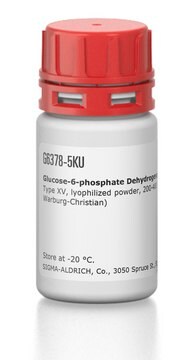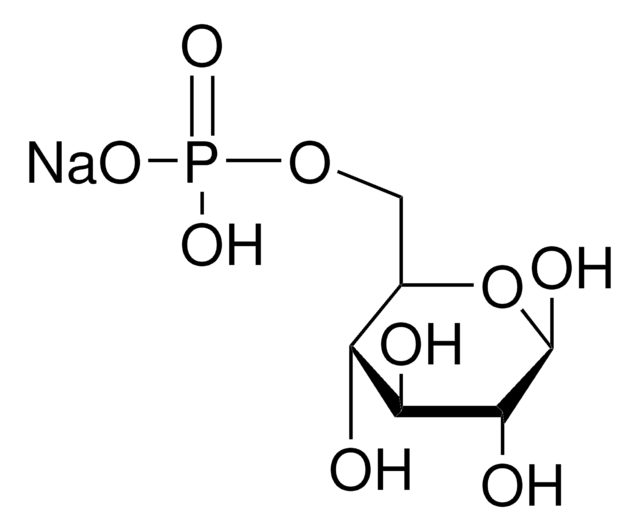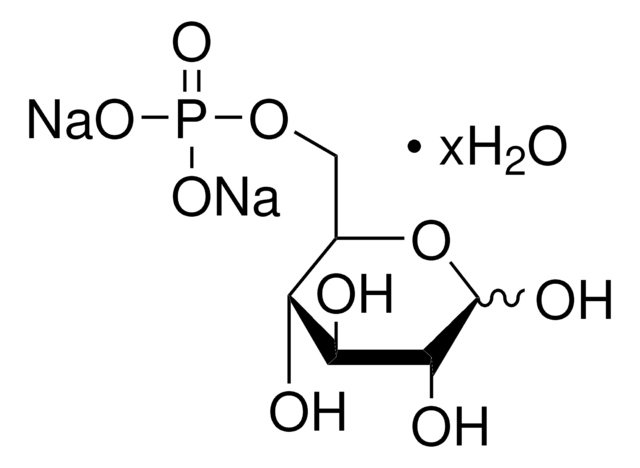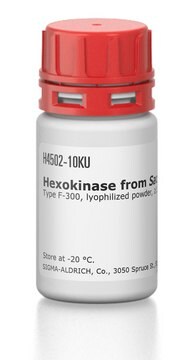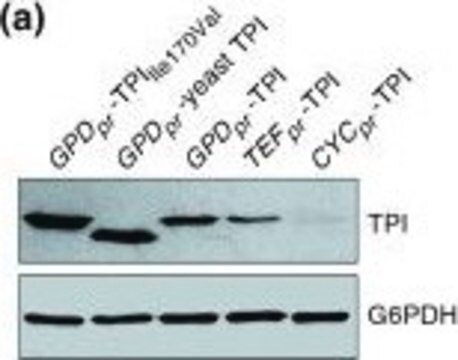G7877
Glucose-6-phosphate Dehydrogenase from baker′s yeast (S. cerevisiae)
Type VII, ammonium sulfate suspension, ≥200 units/mg protein
Synonym(s):
glucose-6-phosphate dehydrogenase (NADP+), G-6-P-DH, Zwischenferment
About This Item
Recommended Products
biological source
bakers yeast
Quality Level
type
Type VII
form
ammonium sulfate suspension
specific activity
≥200 units/mg protein
mol wt
128 kDa
technique(s)
cell based assay: suitable
solubility
water: soluble
application(s)
diagnostic assay manufacturing
storage temp.
2-8°C
Gene Information
Saccharomyces cerevisiae ... ZWF1(855480)
Looking for similar products? Visit Product Comparison Guide
Related Categories
General description
Application
Biochem/physiol Actions
Unit Definition
Physical form
Signal Word
Danger
Hazard Statements
Precautionary Statements
Hazard Classifications
Resp. Sens. 1
Storage Class Code
11 - Combustible Solids
WGK
WGK 3
Flash Point(F)
Not applicable
Flash Point(C)
Not applicable
Personal Protective Equipment
Certificates of Analysis (COA)
Search for Certificates of Analysis (COA) by entering the products Lot/Batch Number. Lot and Batch Numbers can be found on a product’s label following the words ‘Lot’ or ‘Batch’.
Already Own This Product?
Find documentation for the products that you have recently purchased in the Document Library.
Customers Also Viewed
Articles
Instructions for working with enzymes supplied as ammonium sulfate suspensions
Protocols
Enzymatic Assay of Glucose-6-Phosphate Dehydrogenase (EC 1.1.1.49)
Our team of scientists has experience in all areas of research including Life Science, Material Science, Chemical Synthesis, Chromatography, Analytical and many others.
Contact Technical Service